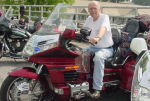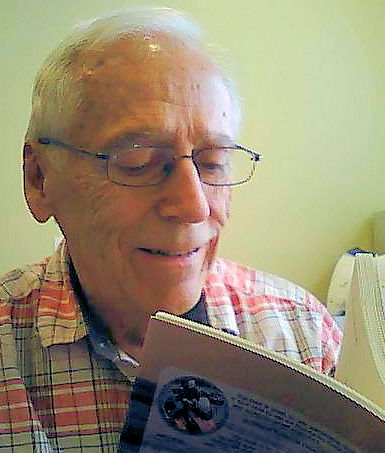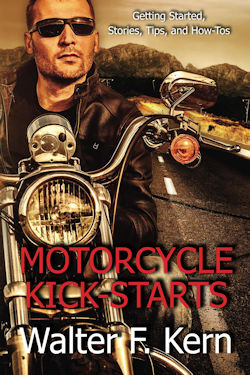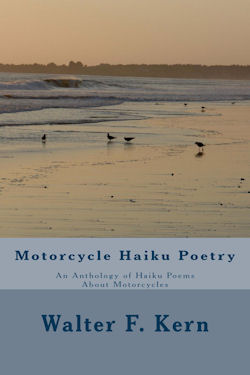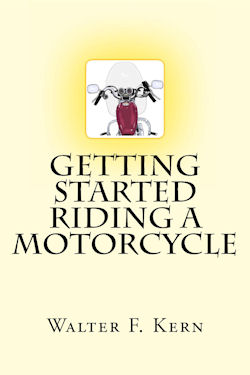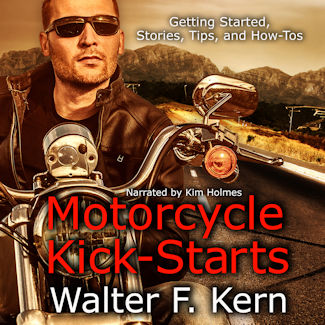The Harley-Davidson and Indian Wars - A Book Review By Walter F. Kern Part 1: Beginnings of the Wars An historical look at the 50-year battle between Indian and H-D The Indian motocycle was first built in 1901 by the Hendee Manufacturing Company of Springfield, MA USA. Note the fact that George Hendee, founder of the company, termed it a "motocycle" not a motorcycle. The Harley-Davidson motorcycle was first built in 1903 by three Davidson brothers, Arthur, William and Walter, and William Harley. Although there were more Davidsons than Harleys, the company was named Harley-Davidson because "it sounded better." For the next 50 years these two companies engaged in a competitive struggle with each other on the track and in the show rooms to capture the hearts of their customers. This battle of motorcycle giants is well described by Allan Girdler in his book, The Harley-Davidson and Indian Wars. Most motorcyclists will not even remember the war between Indian and Harley-Davidson. The war, begun in 1903, did not end until 1954 when Indian stopped production with these words delivered to its loyal dealers:
The fifty years of Indian vs Harley-Davidson are chronicled by Girdler in the following representative chapters:
Powerplus and Model J Model O and J Sport Twin Scout and Model D Chief and JDH Indian Four 101 Scout and Model D Sport Scout and Model RLDR Knucklehead and "Improved Four" Buddy Seat and Chum-Me Seat 841 and Model XA Hummer and Indian CZ Hydra-Glide, the Arrow, the New Scout This is a 180 page book with both color and some black-and-white pictures on nearly every page. Here are a few facts taken from the book: Girdler traces the history and contrasts the two companies as they try to outdo each other with new models and innovations. He details the differences between the founding members of both companies. Indian was formed by Hendee who already had a successful bicycle company. He was much older than the founders of Harley-Davidson who were relying on their enthusiasm more than their business savvy. For example, in 1915 in order to save money, Indian gave explicit instructions on how to send telegraph messages in code. For example, a dealer might send a message: GOOD BALK GET. These words would decode into: GOOD = "Have you shipped?" BALK = "Model E-3, Single-Cylinder Three-Speed Service" GET = "Answer by wire." Also, when Indian needed to expand, it would get new funds from investors, whereas Harley-Davidson would receive aid from their family members. In 1917, Indian introduced the Model O whereupon H-D introduced the WJ Sport Twin. Both of these models used horizontally opposed engines similar to what BMW would introduce in 1923. The Model O soon became known as "Model Nothing" since it was viewed as too practical, small, and quiet. The H-D version had an engine twice the size of the Model O. Neither model proved popular in the USA. Indian normally used names for its models while H-D used letters and numbers. This strategy seemed to work for Indian when it introduced the Scout, as it became a runaway seller. Other motorcycle companies were also involved in this struggle. The Henderson brothers had produced the 4-cylinder Henderson motorcycle. It was bought later by Excelsior. Then, one Henderson brother left Excelsior and formed his own company, Ace, where he refined the 4-cylinder machine further. Ace soon went out of business and Indian bought manufacturing rights to the Ace. It shortly became the Indian Ace and then the Indian Four. Harley-Davidson considered making a 4-cylinder version also but abandoned the idea. The Ace never really caught on except for police use and did not appear in the catalog after World War II. Girdler relates several poems that were popular early on about this rivalry. Here's one:
The Indian Scout, or its brother, The Indian Chief. They're built like rocks To take hard knocks. It's the Harleys That cause the grief." Now Read Part 2 to learn about the Servi-car and more rivalries between Harley and Indian. => Page 2: Servi-car and more rivalries
|
|||||||||
© 2013-2017 Walter F. Kern. All rights reserved.
|
